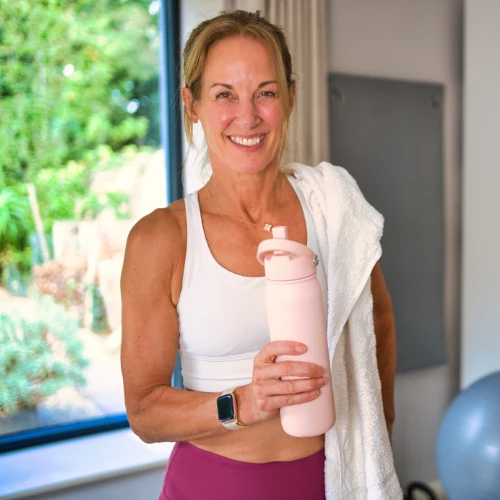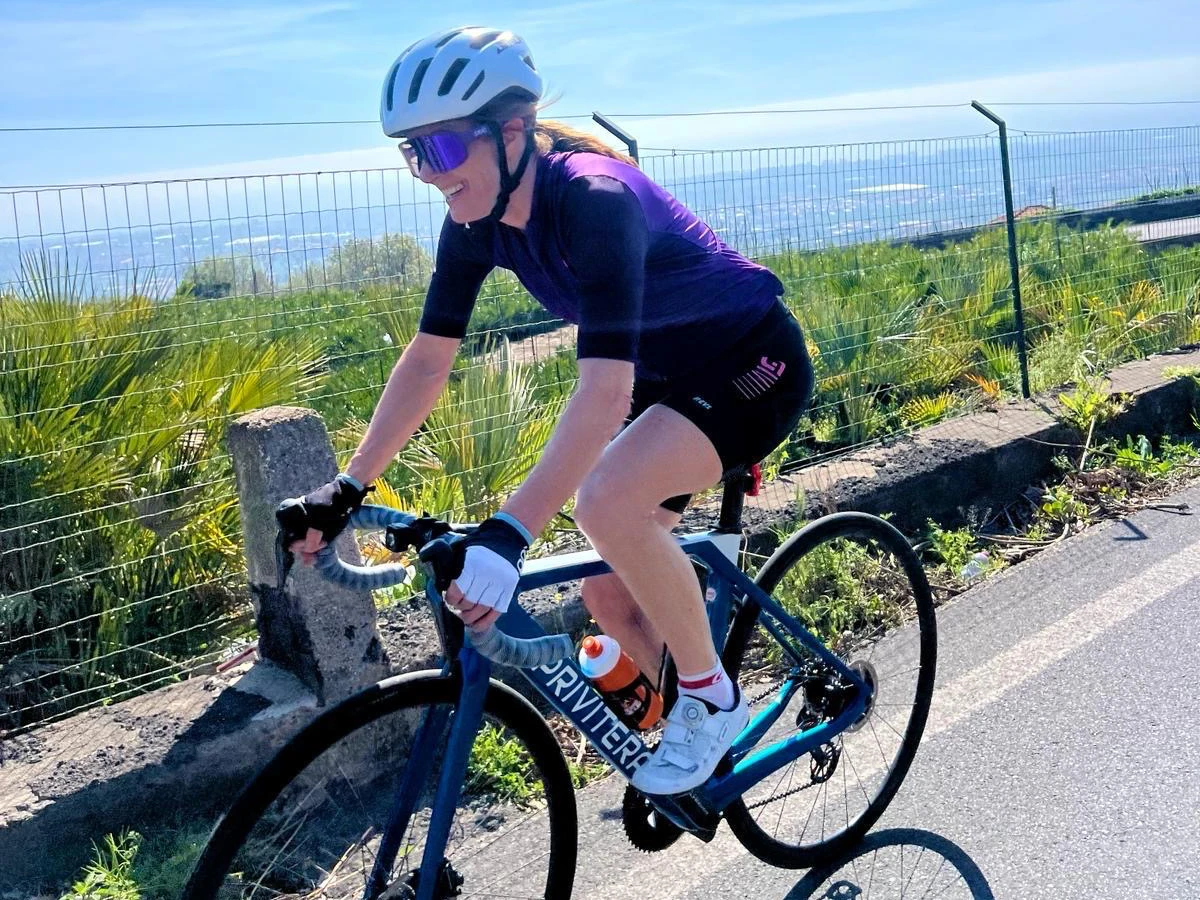
by Clare Kennedy
Level 4 personal trainer UCD, Certified nutritionist with MAC Nutrition
My passion is helping people reach goals they have struggled to achieve. While weight loss and body composition are the most active part of my practice, I also work with clients diagnosed with conditions such as osteoporosis and sarcopenia.
Forget chasing fleeting trends! There’s a powerful shift happening in how people are approaching fitness, and it’s all about function. We’re not just aiming for a certain look; we’re building bodies that work for us, day in and day out. Think about it: isn’t it more empowering to be able to keep up with your kids, enjoy sport, or your garden without aches and pains?
What’s the Buzz About Functional Fitness?
Simply put, functional fitness trains your body for real life. We’re talking exercises that mimic the movements you do every single day – bending, lifting, twisting, reaching. It’s about prepping your muscles and joints to handle these tasks with ease, strength, and stability. Imagine feeling more balanced when you’re carrying something heavy or having the core strength to maintain good posture while you work. That’s the promise of functional training.
By focusing on these practical movements, you’re not just getting stronger in the gym; you’re enhancing your overall quality of life. Improved mobility, better balance, and a rock-solid core become your superpowers, making everything from chores to weekend adventures enjoyable.
Why Are people Saying “Yes!” to Functional Fitness?
The shift is clear: people are prioritizing feeling good and performing well over purely aesthetic goals. Functional fitness delivers on this! It’s about building a resilient body that will support you for years to come.
Plus, these exercises work with your body’s natural movement patterns, building a sustainable foundation of strength. As we become more aware of the importance of staying mobile and preventing injuries, especially as we age, functional fitness steps into the spotlight as the smart and effective way to train.
Your Functional Fitness Toolkit
Powerhouse moves that engage multiple muscle groups, boosting your strength, mobility, and stability at the same time.
1. Squats: The Foundational Force
Think about how many times you sit down and stand up each day. Squats are the ultimate functional exercise because they directly mirror this essential movement. They build incredible strength in your legs, hips, and core – the very muscles you rely on for everything from getting out of a chair to picking up something from the floor.
How to own it
- Stand with your feet shoulder-width apart, toes slightly pointed out.
- Keep your chest proud and imagine you’re about to sit back into a chair, bending at your knees and hips.
- Lower down until your thighs are parallel to the floor (or as low as feels comfortable for you).
- Drive through your heels to power back up to your starting position.
Why squats are your ally
Squats are a multi-muscle marvel, firing up your quads, hamstrings, glutes, and core. They’re your secret weapon for lower body strength, core stability, and keeping your hips and knees mobile.
2. Lunges: Mastering Balance and Stability
Walking, climbing stairs, reaching for something low – lunges have your back (and legs!) for all these everyday actions. They’re fantastic for honing your balance, coordination and lower body power.
How to stride strong
- Stand tall with your feet hip-width apart.
- Take a confident step forward with one leg, lowering your body until both knees form roughly 90-degree angles.
- Your back knee should gently hover just above the ground, and your front knee should stay right over your ankle.
- Push off the heel of your front foot to return to your starting stance.
- Repeat on the opposite leg.
Why it’s your advantage
Lunges challenge your balance and build stability by engaging the muscles in your legs, hips, and core. They train your body to move dynamically in different directions, which is crucial for navigating the real world.
3. Planks: Your Core Connection
A strong core is the unsung hero of all functional movement. Planks light up your abs, back, shoulders, and hips, giving you the stability you need for everything from lifting objects safely to maintaining good posture throughout your day.
How to hold your power
- Get into a forearm plank position, with your elbows directly beneath your shoulders and your body forming a straight line from your head to your heels.
- Engage your core muscles and hold this strong, stable position for 20 to 60 seconds, or however long you can maintain good form.
- Keep your neck relaxed and in line with your spine, and resist the urge to let your hips sag or rise too high.
Why it’s your foundation
Your core is involved in almost every move you make! Planks are a top-notch way to build core strength and stability, directly impacting how you move during daily tasks and providing crucial support for your lower back.
4. Deadlifts: Lifting with Confidence
Bending down to pick up anything – from a child to a heavy box – that’s a deadlift in action! This exercise is key for building strength in your back, hips, and legs. Mastering proper form is non-negotiable, as it teaches your body to lift using your powerful leg and hip muscles, protecting your back from unnecessary strain.
How to lift smart
- Stand with your feet hip-width apart, with a slight bend in your knees and a weight (if you’re using one) in front of you.
- Keeping your back straight and your chest lifted, hinge at your hips to lower the weight towards the floor. Think about pushing your hips back.
- Drive through your heels and engage your glutes to lift the weight back up, returning to a standing position.
- Focus on the hinge movement at your hips, not bending your back.
Why it’s your protector
Deadlifts directly mimic the motion of lifting heavy items. By strengthening the muscles involved, you significantly reduce your risk of injury and build the functional strength that makes everyday, lifting tasks feel easier and safer.
5. Step-Ups: Elevating Your Strength and Mobility
Think about climbing stairs or stepping onto a curb – that’s the essence of a step-up. This functional exercise is brilliant for building leg and glute strength while enhancing your balance and coordination.
How to step up to strength
Stand facing a sturdy bench or elevated surface.
- Place one foot firmly on the surface, pressing through your heel to lift your body up.
- Bring your other foot up to join it on the bench, then step down one foot at a time.
- Repeat, leading with the other leg.
Why it’s your advantage
Step-ups train your body for common daily movements, like navigating stairs and obstacles. It’s a fantastic way to boost lower body strength and improve your stability.
Why Functional Fitness is Your Long-Term Investment
As we journey through life, we naturally experience some muscle loss and reduced mobility. Functional fitness is a powerful tool to counteract these effects. By focusing on strength, balance, and mobility in ways that directly translate to everyday tasks, you’re investing in your long-term well-being and independence.
Functional fitness offers unique benefits, supporting bone health, maintaining muscle tone, and promoting joint stability – all crucial for preventing conditions like osteoporosis and arthritis. Plus, it encourages better posture, which can significantly reduce back and neck pain.
By weaving functional movements like squats, lunges, planks, and deadlifts into your routine, you’re not just exercising; you’re building a stronger YOU for life.
Final Thoughts: Embrace the Power of Function
Functional fitness isn’t about chasing an ideal; it’s about empowering your everyday. People who prioritize these movements are not only meeting their fitness goals but also enhancing their ability to live life to the fullest.
So, the next time you’re working out, consider how each movement connects to your daily life. Because ultimately, true strength isn’t just about how you look – it’s about how you move, how you feel, and how fully you experience the world around you.
“It’s just over a year since I started your classes. It’s flown by! All I can say is your workouts have made the most enormous difference – they are very confidence-boosting, both physically and mentally. I do 2-3 classes each week.”
Louise, class participant

